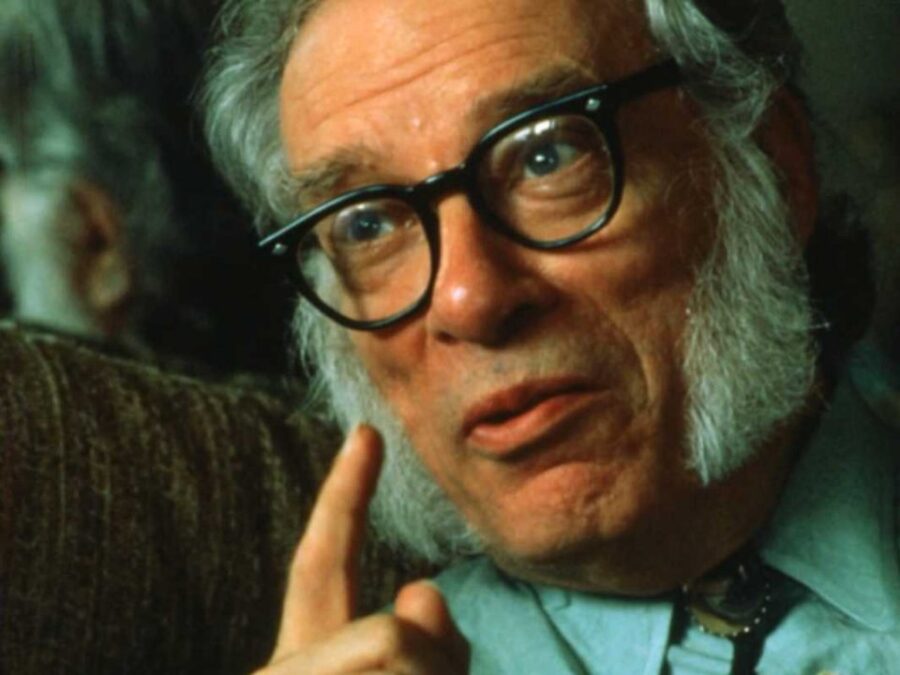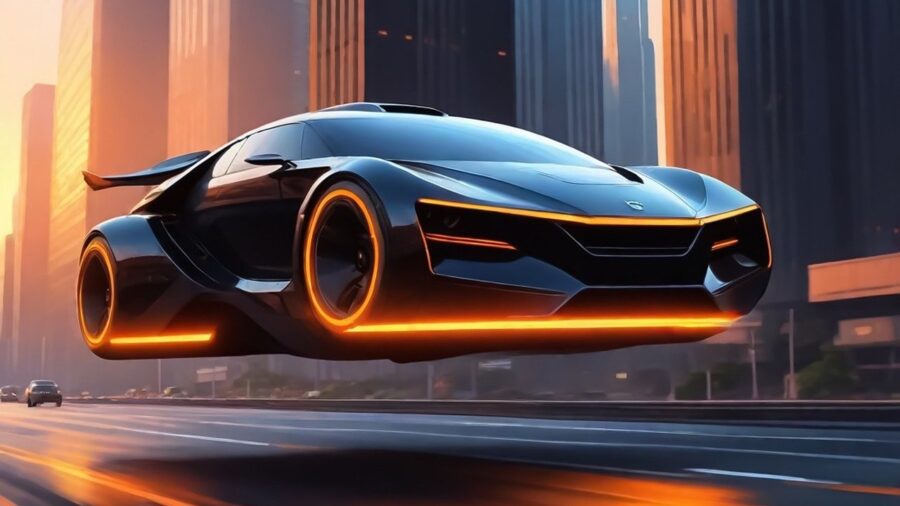Isaac Asimov Predicted The Future Of 2014, In 1964

Could Isaac Asimov see the future? Science fiction has always been about imagining the future: technologically, philosophically, or even satirically. It doesn’t always get the future right, mind you — we may technically have jetpacks and flying cars, but they’re not nearly as sleek and omnipresent as we’d been hoping for.
One of the genre’s premiere futurists was Isaac Asimov, who was a science fiction titan but who also wrote fantasy, mysteries, and volumes of nonfiction encompassing subjects such as history, science, Shakespeare, and even the Bible. But in 1964, Asimov sat down to imagine a very specific future: that distant and mysterious year of “2014 A.D.”
In an article penned for the New York Times on August 16, 2014, Isaac Asimov uses the hopeful visions of the 1964 World’s Fair to imagine what our own impending future, a few short months away, might look like, and what wonders the World’s Fair of 2014 might hold.
Isaac Asimov’s predictions range from the simple to the fantastic, but it’s intriguing to see what he got right, and what he got wrong. Below we’ll excerpt some of those predictions, and see how well the late Asimov’s foresight predicted the world we all live in.
Early on he predicts that underground dwellings will be all the rage, “with easily controlled temperature, free from the vicissitudes of weather, with air cleaned and light controlled.”
The surface, Isaac Asimov claims, will be largely used for agriculture and parklands. While there’s no reason we couldn’t all be chilling in snazzy underground hobbit holes, subterranean housing hasn’t caught on nearly as much as Asimov thought. Instead, we continue spreading up and out, but rarely down.
Given how much Isaac Asimov is associated with robots, what with his Three Laws and all, of course, the writer has some thoughts about the future of such automatons.
Surprisingly, however, his predictions in the field of robotics are fairly conservative. He guesses that robots in 2014 “will neither be common nor very good.” While there are some amazing advances being made in robotics these days, I think that’s still a largely accurate statement, especially when our modern robots are compared to the ones envisioned by Asimov.

Also, although he only touches on it briefly, Isaac Asimov correctly predicts the fundamental role smaller and smaller computers will play. “The I.B.M. exhibit at the present fair has no robots but it is dedicated to computers,” says Asimov, “which are shown in all their amazing complexity, notably in the task of translating Russian into English. If machines are that smart today, what may not be in the works 50 years hence?”
He misses the internet, however, when predicting that power cords will be a thing of the past, and that all electronic devices will be powered by “long-lived batteries running on radioisotopes.”
His vision of the future also proves more advanced than ours when it comes to the subject of our power needs. Asimov’s vision includes experimental fusion plants and widespread solar-power stations, and he assumed the 2014 World’s Fair would show “models of power stations in space, collecting sunlight by means of huge parabolic focusing devices and radiating the energy thus collected down to earth.” (That’s a subject well explored in Ben Bova’s Powersat.)
Sadly, our transition away from fossil fuels and into renewable energy sources still drags far behind Asimov’s visions.

Isaac Asimov predicts that wheeled cars will be a fading fad, with most land vehicles coasting along on “jets of compressed air.” He also champions one of the great dead-end fascinations of classic science fiction: moving sidewalks.
Sure, you’ll run across them in airports and other places now and then, but for the most part we still have to get from here to there on foot the old-fashioned way. Which is probably a good thing, given the obesity epidemic in this country.
His predictions of cars controlled by “robot brains,” without the need for human guidance, is a yes-and-no affair. It’s certainly not a prevalent technology, but Google’s self-driving car is pretty much exactly as Asimov described it. Give us another couple of decades, maybe.
Isaac Asimov also hits the nail on the head when describing, basically, Skype. “Communications will become sight-sound and you will see as well as hear the person you telephone. The screen can be used not only to see the people you call but also for studying documents and photographs and reading passages from books.” Pretty much sounds like a laptop equipped with a webcam, which most of them are these days.

He also mailed sci-fi’s beloved subject of the exploration and colonization of Mars. “…by 2014, only unmanned ships will have landed on Mars, though a manned expedition will be in the works…” There are several of them in the works, actually, both by governmental space agencies and by the private sector.
On a darker note, Isaac Asimov correctly predicts that the world’s ever-increasing population will inevitably begin to put a strain on resources. The writer speculates that “in 2014, there is every likelihood that the world population will be 6,500,000,000 and the population of the United States will be 350,000,000.”
As I type this on Wednesday, August 28, 2013, the global population is actually above seven billion. His guess for the U.S. population, however, is a bit too high. Current U.S. population according to the U.S. Census Bureau’s U.S. and World Population Clock is, as I type this, 316,555,600.
There are plenty more of Asimov’s predictions to to read in the full New York Times story. While the future isn’t as futuristic as Asimov and others once imagined, we can at least take comfort in the fact that we’re still here, as a species, and as long as that is true, hope remains that we might still turn ourselves toward a brighter future.












